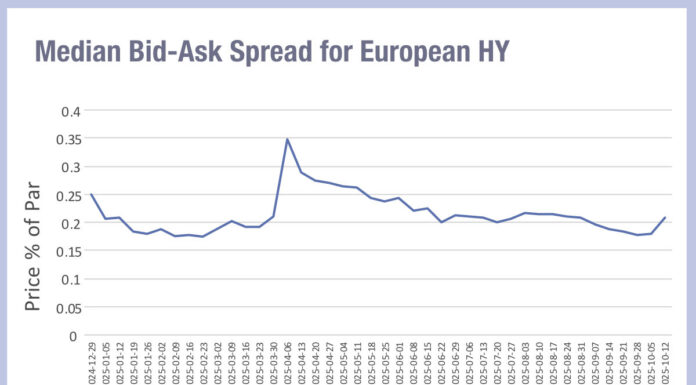Japan’s initially slow adoption of e-trading is increasing in pace as local investors seek liquidity in local and foreign markets, according to a recent report from Coalition Greenwich.
More than half (56%) of Asian investors included in Coalition Greenwich’s survey currently use e-trading, compared to just 36% in the 2013 study. Similarly, the percentage of Asia-based asset managers using e-trading for fixed income rose from 36% to 63% over the decade.
Despite e-trading only accounting for 26% of total volume in the region, electronic channels are used to execute approximately 80% of domestic-currency bond volumes.
The high uptake of e-trading is due to a range of factors, the report states, including cost efficiency, transparency and liquidity access. Using these tools also allows for more accurate measurements of execution quality, it added, improving the performances of traders and algorithms alike.
Greater trade volumes – which are expected to increase further this year – are another contributing factor, the report says. Half of those participating in the survey shared that they expected to trade more local Asian currency bonds over the next year; breaking down the figure, this consists of 45% more G10 government bonds, 38% more developed-market corporate bonds and 35% more G3-denominated Asia bonds. With limited numbers of traders, e-trading is the only way investment managers can keep up.
The integration of e-trading tools within order management systems is also boosting their use, Coalition Greenwich says, as are innovations in trading protocols that improve buy-side efficiency while preserving dealer revenue.
Widespread e-trading adoption in Japan in its early stages, with just 27% of Japanese investors trading non-yen government bonds electronically. A total 26% of notional volume is executed on-screen, the bulk of which is in US Treasuries. In corporate bonds, just 18% of investors use e-trading and only 6% of notional value is traded electronically.
However, Coalition Greenwich reports that Japan’s largest asset managers are trading the majority of their orders in these bonds electronically. This shift will likely be reflected in smaller firms later down the line.
High implementation costs and compliance burdens are preventing some investors from fully embracing e-trading, Coalition Greenwich suggests, but adds that advances in technology will help to reduce these barriers. It adds that regulatory clarity, produced through engagement with investors, bond dealers and trading venues, would also help to boost adoption.
On the future of e-trading, the report concludes: “As the fourth largest economy in the world, the largest holder of US Treasuries and a very significant investor in global fixed income markets broadly, the Japanese market is an inevitable growth story for fixed income e-trading in the years ahead.”
©Markets Media Europe 2024
©Markets Media Europe 2025










